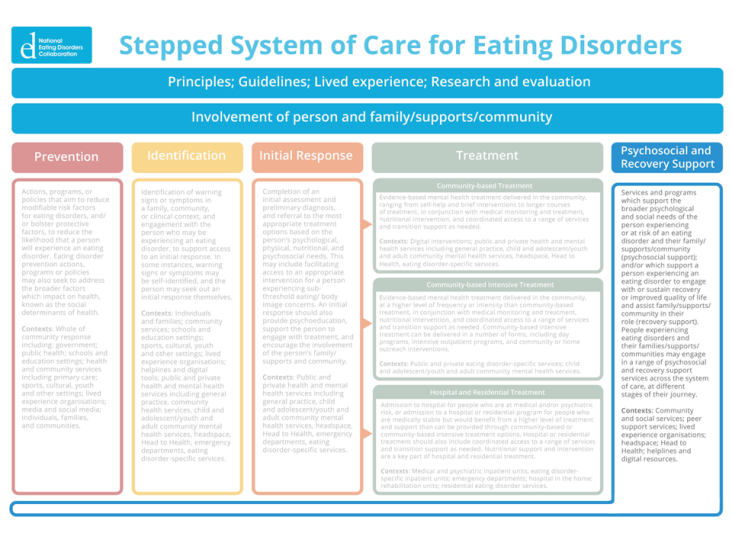Psychosocial support refers to services and programs which support the broader psychological and social needs of the person experiencing or at risk of an eating disorder and their family/supports and community. Recovery support refers to services and programs which support a person experiencing an eating disorder to engage with or sustain recovery or improved quality of life and assist family/supports and community in their caring role.
Providing psychosocial support for a person’s broader psychological and social needs can impact
positively on recovery, and vice versa. People experiencing eating disorders and their families/supports and communities may engage in a range of psychosocial and recovery support services and programs across the system of care, at different stages of their journey. These services and programs are generally delivered by community-based organisations, with funding from the Commonwealth and state and territory governments, as well as through lived experience organisations and the peer support workforce (a part of the Lived Experience workforce).
Peer support work is a form of psychosocial and recovery support that involves connecting with others who have had similar experiences or challenges. Peer support work can take many different forms, including one-on-one conversations, support groups, and online forums. It can be delivered by people with lived experience of an eating disorder to people experiencing an eating disorder, or by people with lived experience of caring for someone with an eating disorder to other people in a caring role. Peer support work can foster a sense of community and belonging and can support people to practice recovery skills.
You can read more about peer support here. You can also read more about eating disorder organisations that provide recovery support here.
We encourage you to read the Psychosocial and Recovery Support section in the National Strategy for further information about areas of focus in psychosocial and recovery support, as well as standards and actions for building this element of the system of care. Please see pages 65-68.

Click to read more about the Stepped System of Care.

